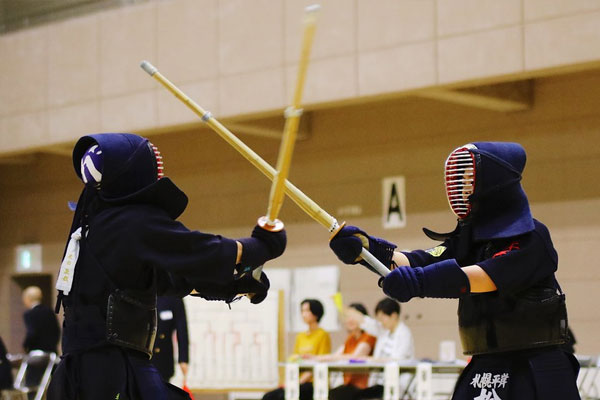Martial Arts Near Me
Kendo
Kendo, the Japanese martial art of swordsmanship, embodies a rich history and profound cultural significance. Stemming from the ancient samurai warrior class, Kendo has evolved over centuries, shaping its techniques, philosophies, and role in modern society. Today, it stands as not only a martial art but also a valuable means of character development and physical discipline.
The origins of Kendo can be traced back to the feudal era of Japan, where samurai warriors utilized the sword as their primary weapon in battle. While many ancient martial arts focused on combat techniques, Kendo emerged as a distinctive art form emphasizing both skillful swordsmanship and the development of one's character. It was during the early 17th century that Kendo began to take its recognizable form, with wooden swords, or "bokuto," and protective gear known as "bogu" being utilized for training and sparring.
However, it wasn't until the Meiji Restoration in the late 19th century that Kendo experienced a significant transformation. With the abolition of the samurai class and the rise of Western influences, traditional martial arts faced decline and suppression. In response, Kendo underwent a reform known as "Gekiken" or "Hachidan-no-kamae," which aimed to preserve and modernize the art. Gekiken introduced a set of rules, standardized protective equipment, and formalized training methods, allowing Kendo to transition into a sport-like activity while maintaining its martial essence.

At its core, Kendo revolves around the practice of striking an opponent with a bamboo sword, or "shinai," while adhering to specific principles and techniques. The objective of Kendo is not merely to defeat the opponent but to embody the essential qualities of a samurai warrior. These principles include "Kikentai ichi," the unity of spirit, sword, and body; "zanshin," maintaining alertness and readiness after striking; and "maai," the understanding of distance and timing.
One of the fundamental techniques in Kendo is the "men," which involves a striking motion targeting the opponent's head. This technique requires precision, speed, and keen awareness of the opponent's movements. Another striking technique is the "kote," targeting the wrist or forearm, and the "do," a strike to the trunk area. Each technique demands proper footwork, body positioning, and the utilization of “ki-ken-tai-ichi,” the synchronization of spirit, sword, and body.
Apart from striking techniques, Kendo also incorporates defensive maneuvers and counter-attacks. The "suriage" technique involves deflecting an opponent's strike with a swift upward motion of the sword and can be followed by a counter-attack. The "nuki" technique entails evading an opponent's strike before launching a counter-strike. These defensive strategies require skillful footwork, swift reflexes, and the ability to read and anticipate an opponent's intentions.
The contemporary status of Kendo reflects its enduring significance in modern Japan and worldwide. Kendo is practiced by people of all ages, from children to senior citizens, in clubs, schools, and international competitions. In Japan, Kendo holds immense cultural value and is considered an integral part of the education system, where it is taught in schools and universities. It serves not only as a physical exercise but also as a means of instilling discipline, respect, and mental fortitude.
Internationally, Kendo has gained prominence and has spread to numerous countries around the world. The International Kendo Federation (FIK) was established in 1970 to promote and regulate the practice of Kendo globally. It organizes international tournaments, provides standardization in training methods, and ensures the preservation of Kendo's core principles and philosophies.
Kendo's presence in popular culture is also notable, with appearances in movies, anime, and manga. Its distinct training techniques and distinctive protective gear have captivated audiences worldwide, further enhancing Kendo's global recognition and appeal. Moreover, Kendo's emphasis on discipline, respect, and personal growth resonates with individuals seeking not only physical activity but also an avenue for self-improvement and spiritual development.
Kendo, the ancient Japanese martial art of swordsmanship, remains an intrinsic part of Japanese culture while finding enthusiasts worldwide. Its historical roots, techniques, and current status showcase its evolution as a discipline that blends physical combat and character development. As practitioners continue to embrace its philosophies and train in its techniques, Kendo stands as a testament to the enduring legacy of the samurai and a symbol of Japan's rich martial heritage.